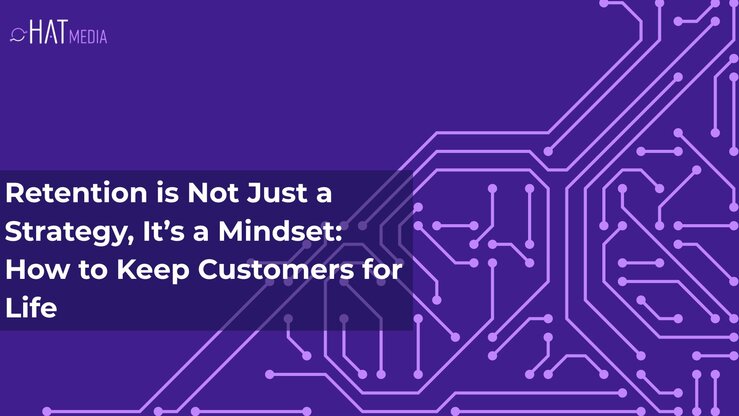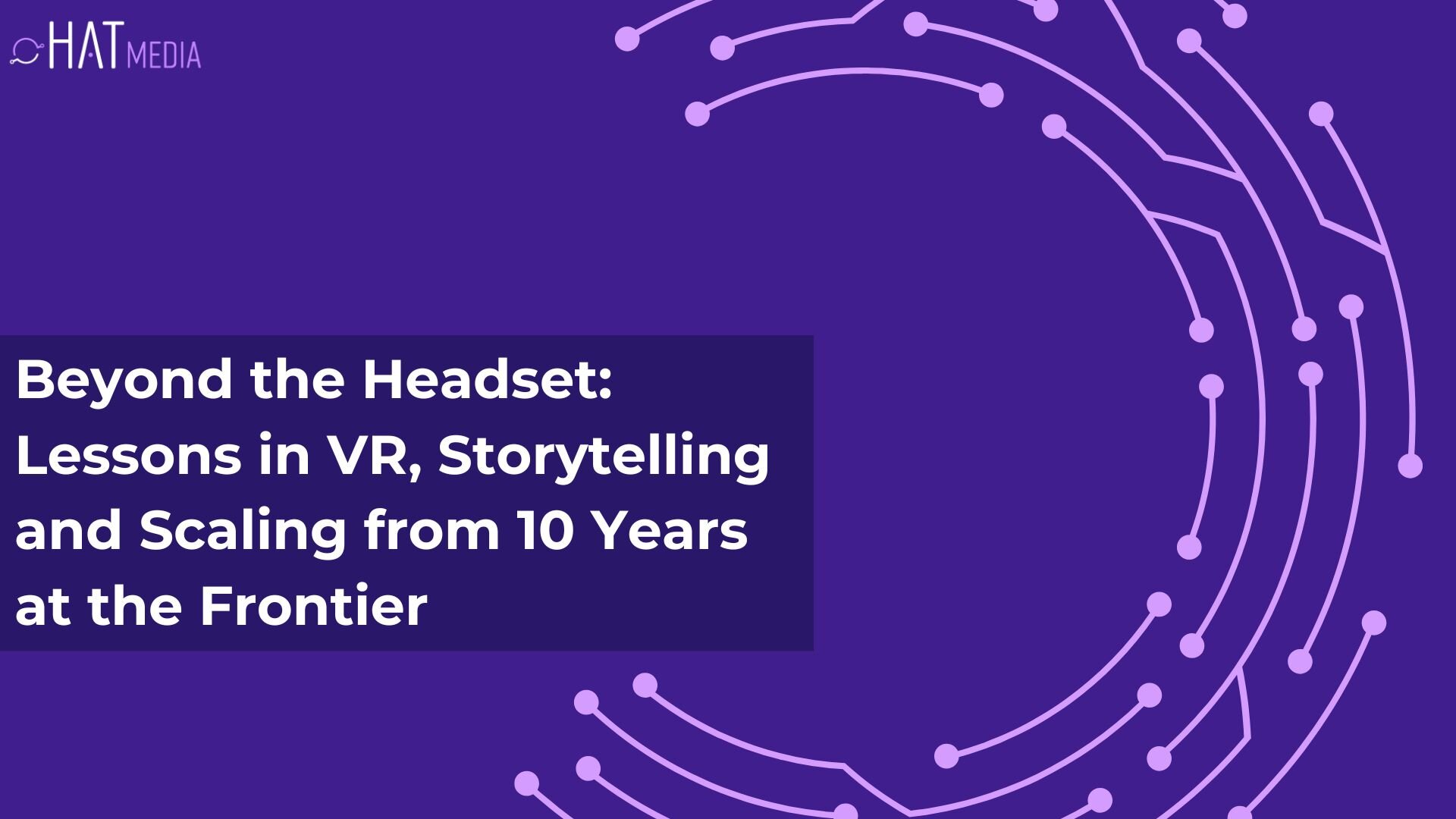Retention Is Not Just a Strategy, It’s a Mindset: How to Keep Customers for Life

We often treat retention like a backend metric. Something to fix when churn spikes, or a checkbox after onboarding.
But Geoff McDonald sees it differently not just as a business metric, but a mindset that should shape your product, marketing, support and culture from day one.
In his SaaS Stories episode, Geoff (a sales-minded founder who built a platform focused on bottom-of-funnel engagement) shares what it really takes to retain and grow customers especially in a world where acquisition costs more, attention spans are shrinking, and users expect value fast.
Here are 10 retention lessons from that conversation and how to apply them across your company.
Watch to the full episode with Geoff McDonald on the SaaS Stories podcast for a deeper dive into this topic.
1. You Can’t Fix Retention with More Top-of-Funnel
In a booming economy, it’s easy to ignore churn. New leads are cheap. Growth hides inefficiencies.
But Geoff made it clear: the era of growth-at-all-costs is over. We’re in a climate where buyers are cautious, teams are leaner, and NRR (Net Revenue Retention) matters more than MRR.
“You don’t have a growth problem. You have a retention problem. Fixing it starts by looking at who’s leaving and why.”
Whether you’re post-Series A or bootstrapped, this is your sign to rebalance attention toward the customers you’ve already worked hard to acquire.
2. Retention = Engagement + ROI
Too many teams treat retention as a lagging indicator. But Geoff reframes it as a result of two leading factors:
- Engagement – Is the customer using the product regularly and meaningfully?
- ROI – Is the customer seeing measurable value and outcomes?
“If your customer logs in once a month and doesn’t see what they’re getting for their money, they’re not staying.”
This means your job doesn’t stop when someone signs a contract. You need a strategy to continually reinforce value ideally through in-app usage, comms, and education.
3. Your Data Isn’t Useful Until It Drives Action
SaaS businesses love to collect data usage stats, NPS scores, support tickets, churn reasons. But Geoff warns: unless that data is linked to behaviour-based action, it’s just noise.
Start by mapping:
- Your top 2–3 ideal customer profiles (ICPs)
- The most common paths to value for each
- The signals that indicate a customer is slipping
Then ask: what are we actually doing when those signals appear? For example:
- Trigger a personalised email from their CSM
- Offer a 2-minute training video
- Proactively escalate to product or support
4. Referred Customers Stick Better, If You Ask at the Right Time
Geoff shared that referrals are one of the highest-performing, lowest-cost acquisition sources in SaaS but they only work if timed right.
When do customers want to refer you?
- After they’ve had a “wow” moment
- When they’ve achieved a tangible outcome
- When they feel part of your community or brand
Too many referral asks come either too soon or feel transactional (“get $10 off if you send a friend”).
“Referrals should feel like a natural extension of loyalty not a marketing scheme.”
And don’t forget: B2B referrals often come from professional credibility, not rewards. Frame your ask around helping others, not saving money.
5. Personalisation Should Be Based on Behaviour, Not Just Tokens
It’s easy to say “Hi [First Name]” in an email and call it personalisation. But Geoff’s example about getting irrelevant travel promotions despite years of history with an airline hit home.
“If they can see I’ve never booked a beach holiday, why am I getting 5 ads for the Bahamas?”
Real personalisation in SaaS comes from usage behaviour:
- Which features are they using or ignoring?
- What role or industry are they in?
- What are they trying to achieve?
Use this context to customise messaging, product tips, and support. Not just for retention — but for relevance.
6. Treat Customers Like People, Not IDs
Geoff’s advice is blunt but true: “Stop treating your customers like CRM entries.”
Your users are busy humans juggling multiple priorities. They don’t want 12 nurture emails a week or automated pings with no context.
If your brand feels like a friend, useful, honest, helpful you build stickiness. But if it feels like a pushy salesperson who doesn’t listen, they’ll churn fast.
Ask yourself:
- Does this message actually help them?
- Would I send this to a friend?
- Are we earning their attention?
7. Support Should Be a Product Feature
We often think of support as a reactive thing users turn to when stuck. But Geoff reframes support as a proactive retention tool.
“If support isn’t built into your product, it will break at scale.”
What does that look like?
- In-app tooltips that explain context
- Guided workflows or onboarding checklists
- AI assistants that answer FAQs instantly
- Smart notifications that prevent common mistakes
When customers feel supported without asking for help, they stick around longer.
8. Automate With Empathy
Automation can be a retention booster or a retention killer.
Poorly timed or overly generic messages frustrate users and damage trust. Geoff suggests a golden rule:
“Automate to support, not to sell.”
That means:
- Smart nudges based on inactivity
- Timely offers based on lifecycle stage
- Context-aware product suggestions
Avoid:
- Batch-and-blast emails
- Gated content after someone’s already paid
- Empty “just checking in” messages
Good automation respects your user’s time and preferences.
9. Culture Leaks Into Customer Experience
Geoff reminded us that the way a company operates internally often shows up externally. If teams are siloed, communication with customers is clunky. If priorities are unclear, support feels disjointed.
His solution? Radical transparency.
“When something’s not working, I bring it to the whole team. Everyone solves it together.”
When everyone in the company understands why a customer matters and what they’re trying to achieve they’re more motivated to go the extra mile.
It’s not about perks or slogans. It’s about alignment.
10. Retention Is a Company-Wide Habit
Perhaps the biggest takeaway from this episode: retention isn’t something you “do.”
It’s something you bake into every function:
- Marketing sets expectations clearly
- Sales sells with long-term outcomes in mind
- Product designs with usability and ROI front and centre
- Support solves proactively
- Leadership listens and leads with care
“You don’t build trust in a day. You build it in every small moment, every email, every interaction, every feature.”
And that trust is what keeps customers loyalty
Final Thoughts
In a world full of tools and tactics, Geoff’s advice is refreshingly human.
Retention isn’t won through clever automation or analytics alone. It’s earned by being useful, thoughtful, and committed to your customer’s long-term success.
So as you plan your next quarter, ask yourself:
- Are we rewarding the customers we already have?
- Are we listening more than we’re pushing?
- Are we using tech to enhance relationships — not replace them?


